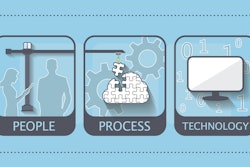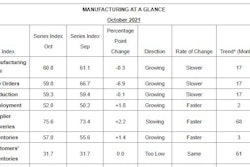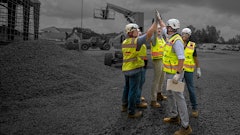
It’s an uphill battle – figuring out what field resources you have available, what projects to put them on and how they will get there on time. Many construction contractors have an inefficient spreadsheet, whiteboard or paper-based solution handling their most important asset in a fallible way.
With no way to identify the needed talent in the company, management can’t allocate the right workers to the right project. Instead of using their valuable time improving business practices, leadership often spends hours scheduling meetings, making endless phone calls and trying to make sense of confusing documents. This has led to a major gap in construction – a workforce management gap.
What is Workforce Management?
Workforce management (WFM) is an organizational approach used to optimize efficiency and effectiveness of employees. When each of your workers are accounted for and utilized appropriately, you’re able to get a better grasp of who makes up your organization and what their talents are.
Specifically, construction workforce management means getting the right people in the right place at the right time, which in turn creates the right plan. Every contractor is practicing workforce management. However, most are doing so unknowingly and unequipped. This equates to processes that are fragmented, unstandardized, redundant and high risk. Imagine running your business without an ERP, your projects without a project manager, or financials without an accounting department.
Taking this a step further, there’s no way to identify which employee is an expert or how well they performed on a previous assignment. It creates chaos – and that’s exactly how most contractors are handling workforce management today simply because it’s “the way it’s always been done.”
Redundant and inaccurate workforce information can increase project costs and make work inconsistent every week. A worker could be benched one week while their skills are much needed elsewhere, simply because their supervisor has no accurate vision of current assignments.
With no way to look ahead or behind, contractors have to live day to day, unable to optimize past or present data to inform future projects. A worker could be an expert at the latest fireproofing practices, but the organization has no way to track this skill.
With all this headache, current labor scheduling and management solutions just aren’t cutting it anymore. What’s missing? A better workforce management solution.
Use a Digital Solution to Protect Your Business
As noted, construction workforce management is commonly a fragmented process. Unlike estimating or accounting practices, most contractors don’t utilize the proper technology to manage their workforce. However, with the right digital solution, those endless scheduling meetings and cumbersome documents can be replaced with digitized data housed in cloud-based software.
 With the LaborChart mobile app, contractors can manage their workforce directly from a smartphone or tablet.LaborChart
With the LaborChart mobile app, contractors can manage their workforce directly from a smartphone or tablet.LaborChart
WFM in Action
Digital workforce management can make a world of difference. Take Architectural Interior Restorations (AIR), a LaborChart customer. AIR has been enhancing buildings around Cleveland, OH, since 1983, from hospitals and schools to retail and industrial structures. It focuses on drywall, metal stud framing, ceiling installations and more.
AIR had been using a spreadsheet to manage its labor. Assignments were made in the morning, and a few hours later, the spreadsheet was inaccurate as workers moved from one job to the next.
With LaborChart, what once took a few phone calls and multiple people can now be done by one person all in one platform. The specialty contractor can now:
- ensure all of its projects are covered with the right resources,
- provide clarity on where people are going next
- and create a holistic view of what jobs are ending and which ones are coming up.
More than Labor Scheduling
Properly utilized, digital workforce management means managing your roster beyond a schedule. It can also help you manage your people and data to make better decisions about how to assign your labor. Forecasting and increased communication means your current workforce will benefit from knowing exactly when and where they need to be.
Instead of wasting time on short-term, inefficient labor management processes, workforce management can create cohesive connections between the office and field so your team can do their best work.



















